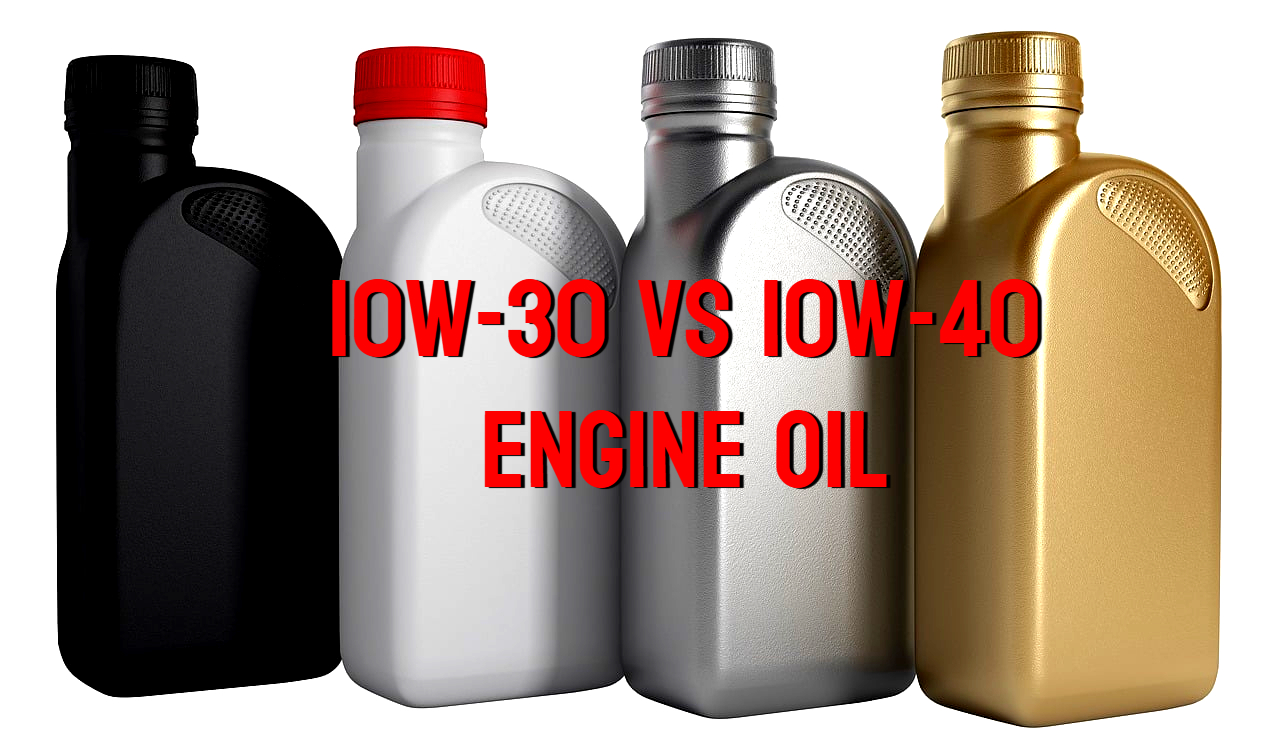Your cart is currently empty!

10W-30 vs 10W-40 Engine Oil: Key Differences Explained
Engine oil is an important part of keeping your car running smoothly. Lubricating engine components reduces friction and prevents excessive wear. The Society of Automotive Engineers (SAE) developed a standardized engine oil classification and grading system based on its viscosity under cold and hot conditions. This is why motor oil classifications often include two numbers, such as 5W-30, 10W-30, and 15W-40.
When choosing the right oil for your vehicle, you might come across different viscosity grades, such as 10W-30 and 10W-40. Although these oils appear similar, they possess important viscosity differences that impact engine performance, especially in varying temperatures and driving conditions.
To make an informed decision, understand what these numbers mean and how they affect oil flow, engine protection, and fuel efficiency. Picking the wrong type of oil can lead to inadequate lubrication, causing issues like increased wear and tear on moving parts or potential engine failure. We’ll break down the differences between 10W-30 and 10W-40, and guide when each oil is most suitable for your engine.
What The Oil Viscosity Ratings Mean
The first number, 10W, states the oil’s viscosity in cold conditions, with the “W” standing for Winter, not weight, as some might assume. A lower number before the “W” means the oil flows more easily in cold temperatures. The lower viscosity means this oil will ensure smooth startups and reduce engine wear. The second number (30 or 40) indicates the oil’s viscosity at high temperatures (100°C or 212°F). A higher number means the oil stays thicker at high temperatures. For instance, 10W-40 oil is slightly thicker at high temperatures than 10W-30. In this case, the oil can be beneficial for engines that run hotter or operate under heavy loads.
It’s important to get the numbers right when picking the engine oils. If the oil is too thin at high temperatures, it can’t provide adequate protection. Conversely, if it’s too thick when cold, it may struggle to circulate quickly, causing delayed lubrication. Because nearly 80% of the engine wear occurs during cold starts, it helps to choose an oil that flows well in low temperatures.
ALSO, CHECK OUT: A Step-by-Step Guide On How To Change Your Car’s Oil
Differences Between 10W-30 and 10W-40
The key differences between 10W-30 and 10W-40 lie in their viscosity at high temperatures. As you probably have noticed, both oils have the same 10W winter rating, which means the oils perform similarly in cold conditions. However, their behavior changes as the engine warms up. At operating temperature (100°C or 212°F), 10W-40 remains thicker than 10W-30. This means that it provides slightly more resistance to thinning, which can be quite beneficial in hotter environments where engine components require a thicker film of oil.
Because 10W-40 retains more viscosity at high temperatures, it’s an ideal choice for engines operating under heavy loads, such as towing, hauling, or high-performance applications. On the other hand, 10W-30 is a more balanced choice for modern engines and is better suited for colder climates due to its thinner consistency at low temperatures. It provides adequate protection without unnecessary drag on moving parts.
Vehicles operating in hotter climates or under extreme stress may perform better with 10W-40 due to its ability to resist thinning. But 10W-30 is typically sufficient for daily drivers in moderate climates.
ALSO, CHECK OUT: Why Highway Driving Boosts Your MPG: The Science Explained
Fuel Economy and Engine Wear Considerations
Motor oils like the 10W-30 can save fuel by reducing internal engine friction. Since thinner oil flows more easily, the engine doesn’t work as hard to circulate it. This can lead to reduced fuel consumption. This benefit can accumulate over time, especially in fleet vehicles that cover long distances. Consequently, many modern engines are designed to run on lower-viscosity oils.
Thicker oil, such as 10W-40, helps protect older engines with possibly worn-out components. As engines age, internal clearances widen due to metal wear. This increases the likelihood of oil leaks and excessive consumption. The 10W-40 oil maintains a better lubricating film between parts. It then reduces friction and wear due to its increased viscosity.
Ultimately, the choice between 10W-30 and 10W-40 should be guided by your vehicle’s owner’s manual and the manufacturer’s specifications. These recommendations are important because they apply to the specific design and operating conditions of your engine. Any deviation from the manufacturer’s recommendations could result in issues such as increased engine wear or even engine damage.
Author Details

Our Team
Hi there! Welcome to Flagship Drive.
I’m Wilfred Nkhwazi, a passionate car lover from Africa. I created this platform to share expert insights, honest reviews, and a fresh perspective on the latest cars and automotive trends. Let’s hit the road together.
Advertisement

Recent News

